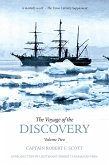In 1819, William Smith, with a general cargo from Montevideo to Valparaiso, sailed further south round Cape Horn than his predecessors, in the hope of finding favourable winds. He sighted land in 62?S. His report to the Senior Naval Officer in Valparaiso was ridiculed, but on a subsequent voyage he confirmed his discovery, taking surroundings and sailing along the coast. As a result Captain Shirreff, the Senior Naval Officer, chartered his vessel, the brig Williams, and having put Edward Bransfield, the master of his ship, HMS Andromache, in charge, sent her to survey the new discovery. Charles Poynter was one of the midshipmen who sailed with Bransfield. His account of this expedition, which forms the principal part of this volume, recently came to light in New Zealand, and is the only first-hand account of the voyage, during which the Antarctic mainland was sighted for the first time, that appears to have survived. The introduction contains some remarks on the South Shetland Islands, followed by chapters giving a brief look at the history of the Spanish in South America and the British presence in the area, together with the speculation leading to the search for Antarctica and chapters on early nineteenth-century navigation and hydrographic surveying.








